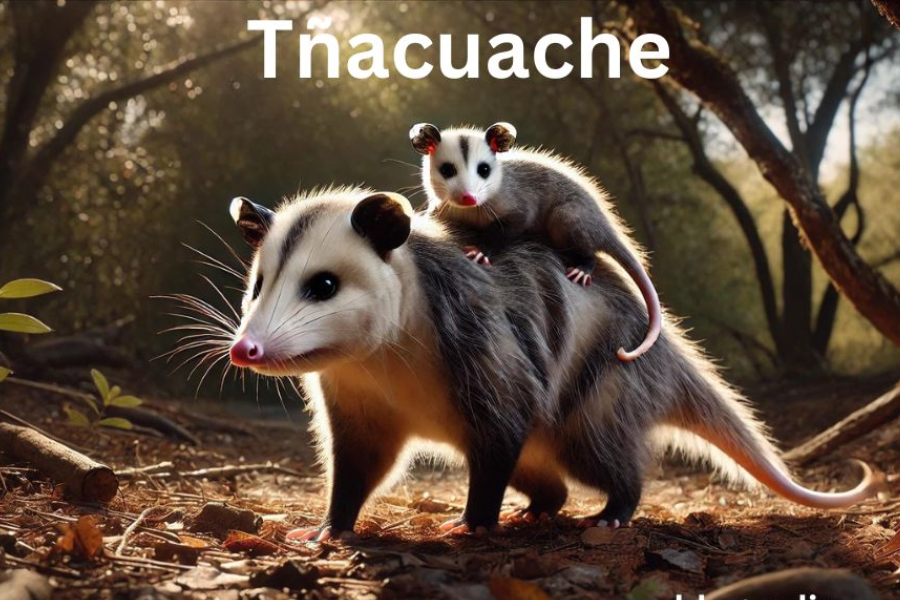Tñacuache: Mexico’s Urban and Rural Ecosystem Ally
Introduction
The tñacuache, a small nocturnal mammal often spotted in Mexico, plays an unexpected yet crucial role in both urban and rural ecosystems. While some view them as pests due to their scavenging habits, environmentalists and conservationists are increasingly advocating for their protection. These animals, also known as opossums, have adapted to a variety of habitats, including Mexico’s bustling cities and quieter countryside. This article explores the tñacuache’s unique characteristics, their contributions to the environment, and the reasons why conserving them is important for biodiversity.
Origins
The word “tñacuache” is derived from indigenous languages in Mexico, reflecting the animal’s longstanding presence in the region. With their distinctive gray fur, pointy noses, and prehensile tails, tñacuaches are well-known to locals. Traditionally, they’ve been viewed with a mix of respect and caution; in many communities, they’re associated with folklore and are thought to bring luck or ward off evil.
Habitat
Tñacuaches are highly adaptable and can be found in various habitats, from dense forests to the concrete jungles of Mexico’s largest cities. In rural areas, they play a key role by controlling insect populations and cleaning up natural waste. However, urban environments present a different set of challenges, as tñacuaches have increasingly turned to rummaging through garbage bins for food, often to the dismay of city dwellers.
Diet
A tñacuache’s diet is omnivorous and opportunistic. These creatures consume fruits, small rodents, insects, and even human food scraps. In this way, they help regulate pest populations and reduce waste, providing an important cleaning service within ecosystems. This balanced diet not only sustains their populations but also supports the broader health of their habitats by ensuring that resources aren’t overly abundant or wasted.
Pests?
In many urban settings, tñacuaches are often seen as pests due to their habit of raiding trash cans, gardens, and occasionally, homes. However, these behaviors are largely a response to diminishing natural food sources as cities expand. While some residents view them as nuisances, others recognize their positive contributions, including the consumption of insects and small animals that might otherwise multiply unchecked in urban areas.
Biodiversity
Biodiversity is one of the main reasons why tñacuaches are so important to Mexico’s environment. They contribute to ecological diversity by filling a specific niche. As scavengers, they help recycle nutrients and prevent the spread of diseases by consuming decaying matter. By keeping insect populations under control, they indirectly support plant life and other animals, creating a balanced ecosystem.
Adaptations
Tñacuaches have several unique adaptations that allow them to thrive in both urban and rural areas. Their sharp claws and strong jaws enable them to dig and scavenge efficiently, while their prehensile tails aid in balance and climbing. These physical traits, combined with their nocturnal nature, help them avoid predators and navigate complex landscapes, making them resilient in the face of human encroachment.
Challenges
Despite their adaptability, tñacuaches face numerous challenges in modern Mexico. Rapid urbanization has led to habitat loss and increased encounters with humans. Many are injured or killed by vehicles, and others suffer from poisonings intended to control their populations. Additionally, misinformation and negative perceptions contribute to a general lack of understanding about their role in the ecosystem.
Conservation
Conservation efforts for tñacuaches are essential for maintaining biodiversity in Mexico. Environmentalists argue that protecting these animals helps preserve the natural balance of urban and rural ecosystems. Conservation programs focus on educating the public about the ecological importance of tñacuaches and promoting methods of coexistence rather than eradication. For instance, some initiatives encourage secure waste disposal practices to reduce human-wildlife conflict.
Conclusion
The tñacuache, though often misunderstood, is a vital component of Mexico’s ecosystems. From city streets to forest trails, they fulfill essential ecological roles that benefit both natural and human communities. By supporting conservation efforts and adopting practices that reduce negative encounters, we can ensure that these resilient creatures continue to thrive, maintaining the delicate balance of biodiversity that benefits us all.
This article has highlighted the significance of the tñacuache in Mexico’s environment, underscoring the need for awareness and conservation. Whether viewed as a nuisance or a helpful ally, the tñacuache’s role cannot be denied, and their presence serves as a reminder of the interconnectedness of all species. Through understanding and preservation, we can foster a world where these remarkable animals continue to thrive alongside us.




